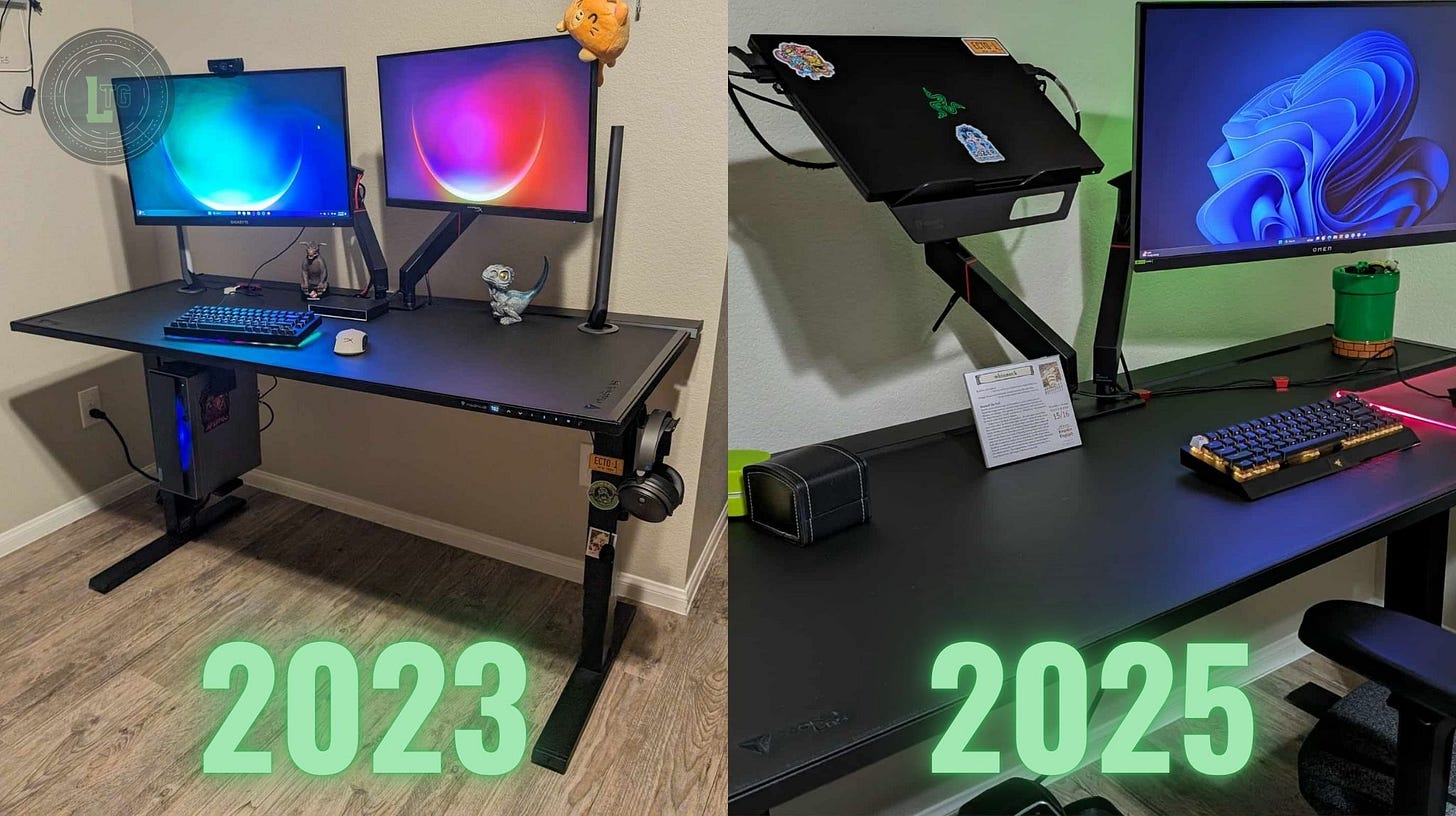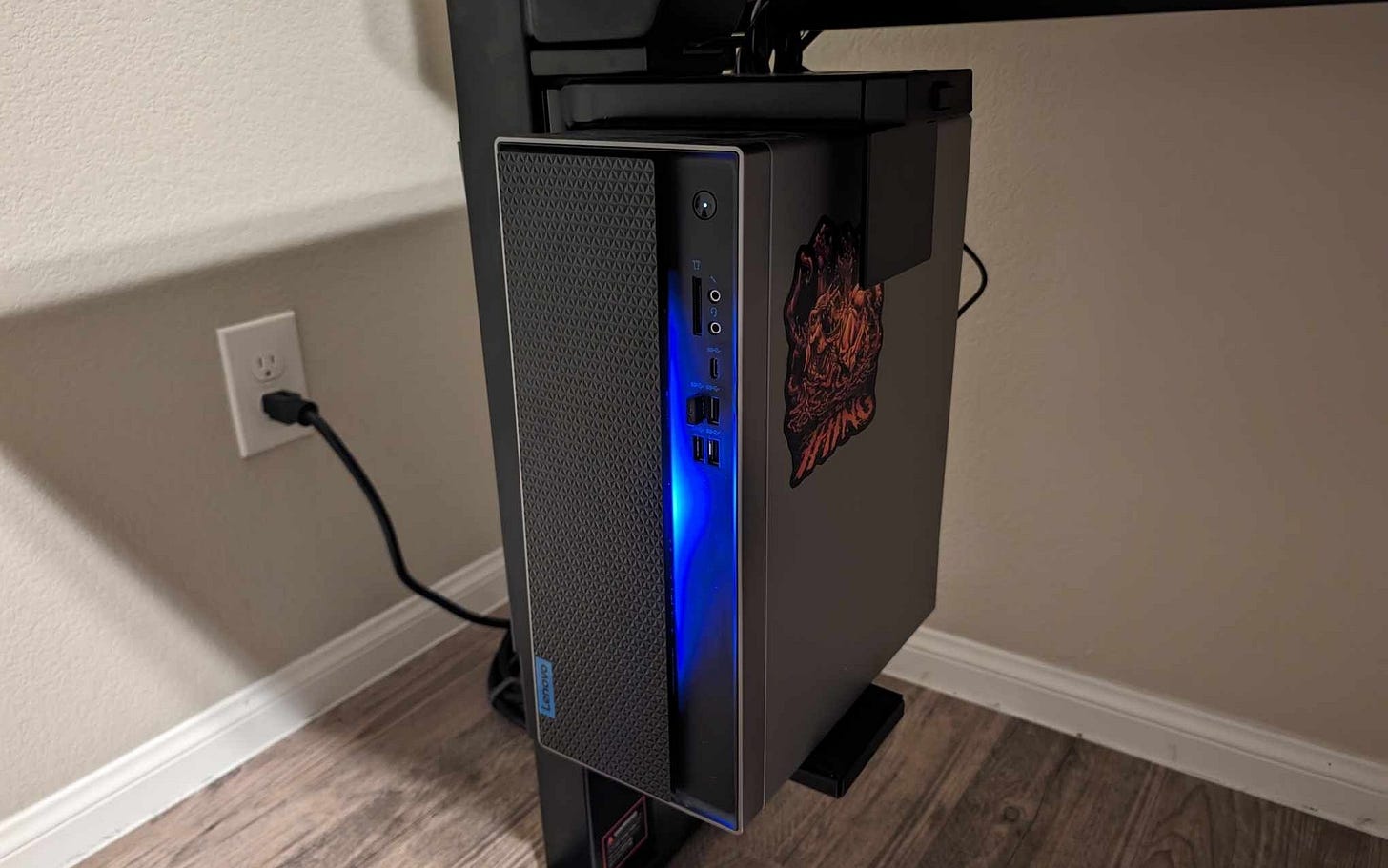Secretlab MAGNUS Pro Desk Review Follow-Up: Is the Honeymoon Over?
Revisiting the MAGNUS Pro after two years of working exclusively on the standing desk.
In January 2024, How-to Geek published my review of Secretlab’s MAGNUS Pro standing desk. Words like “versatile” and “durable” were front and center, painting a picture of the type of desk every shopper would ultimately want. As of December 2025, I will have been using the MAGNUS Pro for two full years, and while that’s a testament to its quality all its own, I wanted to circle back to what may be my second-favorite piece of office furniture.
I won’t get into the first, because I’ll be doing that in a separate review update and don’t want to veer too close to “sponsored post” territory.
If you’ve followed my writing for any amount of time, you know that I’m not swayed by free things. If a product is bad or if it has shortcomings that warrant mention, I’m going to hone in on those points. After all, I think dissecting the issues of a product is more important than offering ample praise, no matter how warranted. And that’s kind of why we’re here, talking about the MAGNUS Pro 24 months after my initial glowing review.
I still stand by everything I said. The steel frame is as sturdy today as it was when first assembled. The all-over magnetic top is sleek, and it comes in handy when adding on some of Secretlab’s (pricy) accessories. The motor hums to life without pause, and the legs extend and retract in one smooth motion.
However, over the years, a few quirks have popped up. They haven’t diminished my appreciation for the overall build of the MAGNUS Pro, but they’re things worth noting so that you know to handle them when you add the magnetized desk to your office or gaming space.
Expect to Dust Frequently
One thing about nearly any kind of electronic is that it attracts dust. Desktop PCs and monitors are typically more susceptible to it. It’s a simple fix, right? Take a duster, brush the desktop down, and you’re good to go. Except you may overlook the one area that’s secretly collecting dust bunnies like it’s amassing an army.
The built-in cable management tray being full-length is both a blessing and a curse. On one hand, my wires are pretty well hidden. On the other hand, if I forget to dust it for maybe a week, it’s a horrid scene. Granted, I do have two cats, which add to the mess despite never lying on the desktop, but even without them, dust collects at a surprising pace.
The legs are another problem area, and that’s primarily because of the lubricant that sometimes collects on the adjustable poles. They don’t get as dusty, but don’t overlook them as you go about your scheduled cleaning, or they may start to look a little fuzzy.
Was Black a Bad Choice?
The black steel frame and magnetic desktop are aesthetically perfect for my office. The pops of color I do have, from glowing peripherals to the rare trinket and magnetic cable anchor, look so nice against the void. The issue is the magnetic desk mat, which is kind of a necessity, because one thing the metal desktop isn’t is comfortable.
Again, quality-wise, the mat is fantastic. Of the 24 months I’ve had the MAGNUS Pro, I’d safely guess that I’ve used it for a cumulative total of 23 months straight, and the leatherette mat hasn’t shown any wear or fading. That’s because I obsessively clean it whenever it scuffs, and it does scuff often.
Scuffs are not permanent and don’t damage the surface of the desk mat, but black shows everything. I drag my keyboard closer, and it leaves behind a faint trail. If my fingers are just a little oily, the mat will announce it to the world. I know the logical answers are “stop dragging the keyboard” and “stop being so oily,” but I also wonder if it would be so obvious if I had gone with the Ash Gray leatherette or one of the NanoGen and Microsuede alternatives.
As bothersome as it may be, even as I write this, I’m highly considering the Stealth black with red stitching and gold emblem. Partially because I’m a masochist, but mostly because it is, for lack of a better word, sexy.
Don’t make my mistake, though. There are a few light-colored options that may serve their purpose without the annoyance of little scuffs and oily fingerprints everywhere.
Accessorsize Judiciously
One of the understandable drawbacks of the MAGNUS Pro is its price. At almost $1,000, you can definitely find cheaper standing desks. Target and Walmart have even started to carry them in-store. You won’t find something that meets Secretlab’s quality at a significantly lower price, but the savings may be tempting when you realize that the sticker shock doesn’t just stop at the cost of the desk. Secretlab offers an array of accessories to enhance storage, monitor layout, cable management, and more, and each can really make the wallet weep.
If you’re considering a monitor arm for your dual monitors, expect that to run $250. Still have a few wires you want to hide, but ran out of the included cable sheaths and anchors? That bundle of two sheaths, three anchors, and 10 fastening straps will set you back $55. From a simple magnetized headphone hanger for $35 to a desk riser for $100, setting up your MAGNUS Pro can be a costly endeavour.
The problem? They’re all absolutely worth it. My dual monitor arms have stayed in place, and neither is showing signs of a weakened hinge. When I had a PC tower, it was safely stowed under the desk (but off the floor) in the PC Mount ($100), and my headphones are easily accessible without taking up desktop space.
Granted, none of this is required, but I would expect to spend an additional $300 on top of the cost of the desk.
Should You Buy Secretlab’s MAGNUS Pro Standing Desk?
At How-to Geek, we ended every review with a simple question: Should you buy…? It’s been two years, I’ve added a few things that weren’t included in the initial review unit, and my answer today is the same emphatic “Yes!” that I gave over 700 days ago.
Heed these warnings, and you can mentally prepare for the cost and stock up on dusters.







